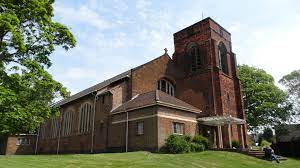Lest We Forget

Every year for as long as anyone living can remember, there has been a national day of remembrance. The day of remembrance is 11th November and the time of remembrance is 11:00am.
Remembrance Day was originally called Armistice Day, the first of which was held on Tuesday 11th November 1919, the anniversary of the signing of the armistice which ended WWI Today, the day of remembrance is generally held on the Sunday closest to 11th November.
Poppies are a universal flower of remembrance, depicting the field of poppies which covered the fields in Flanders, a major battlefield in World War I.
So who or what are we called to remember?
Immediately after WWI the act of remembrance focussed on British servicemen and women who had lost their lives in what became known as ‘The Great War’. After the Second world Remembrance was extended to include those lost in that war.
Today, for many, the focus remains on those lost in these two wars but a trip to the National Arboretum demonstrates graphically how may British servicemen and women have died since the end of WWII.
Here are some figures:
880,000 British servicemen died in WWI (2,000 civilians)
Overall (all nations) the estimated death toll was between 22-23,000,000)
383,600 British servicemen and women died in WWII (70,000 civilians)
Overall (all nations) the estimated death toll was between 70-85,000,000, about 6% of the world’s population in 1940.
During 20th and 21st centuries there has been an estimated 187,000,000 deaths as a direct result of wars – this figure is generally thought to be a significant underestimate.
There is surely nobody alive today who remembers the First World War and very few who remember the Second World War. For most of us they are both little more than a part of our history. Remembrance Day can so easily become little more than an annual ritual. It can sanitise war as something glorious whereas all wars are, by definition, failures; failures of national leaders to resolve issues by mean other than trials of strength and sacrifice of proxies (those sent to fight).
The phrase ‘Lest we forget’ should not be limited to remembering the dead but in remembering the insanity that led to their deaths. Wars will never end wars (there have only been a few very short periods without any conflict worldwide since 1945).














